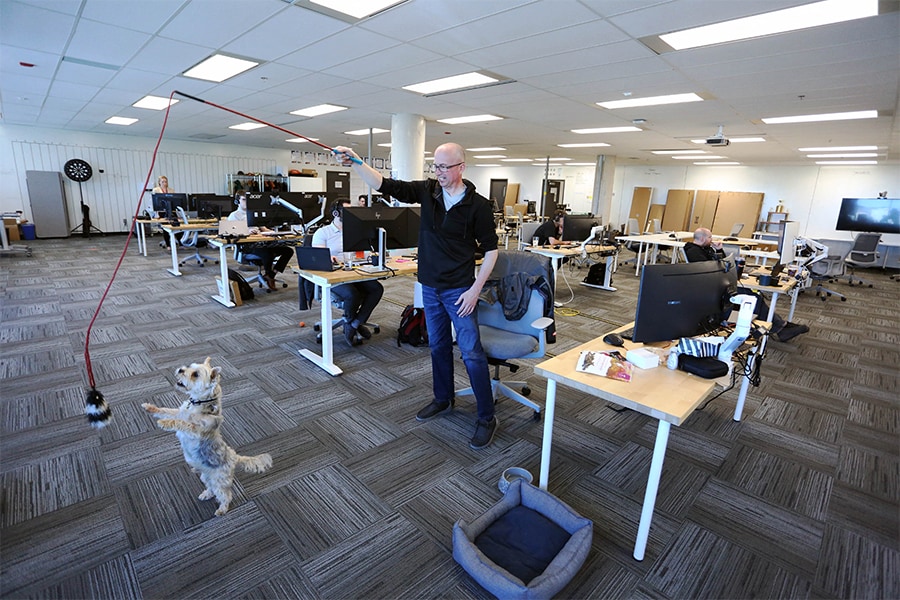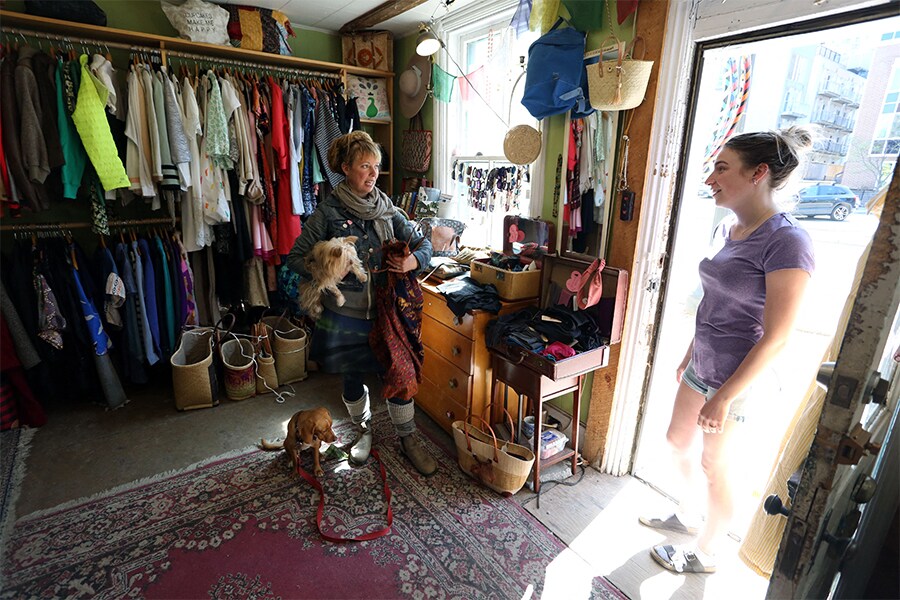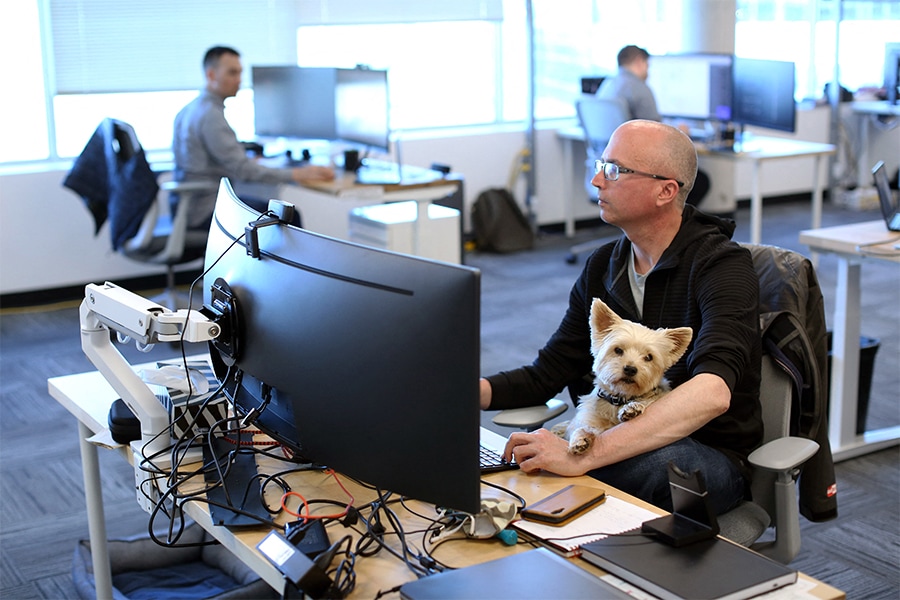
Bring your dogs to work, Canadian offices say as work from home ends
The practice is helping drum up business, as well as increased staff productivity. Workers are forced to take regular breaks for dog walks instead of "eating lunch at their desk," and are not fretting about their pet being left alone at home
 Trevor Watt, project controls manager plays with his dog Samson, a Yorkshire Terrier at the office of Chandos Bird joint venture May 4, 2022 in Ottawa, Canada. (Credits: Dave Chan / AFP)
Trevor Watt, project controls manager plays with his dog Samson, a Yorkshire Terrier at the office of Chandos Bird joint venture May 4, 2022 in Ottawa, Canada. (Credits: Dave Chan / AFP)
Ottawa, Canada: Daisy moseys over to greet visitors, her tail wagging. She's listed as chief morale officer on Tungsten Collaborative's website, and is among the many pets joining their owners returning to Canadian offices after working from home through the pandemic.
The 12-year-old Lab sniffs for treats. Before long, a Basset Hound named Delilah waddles over, offering up her belly for a rub, along with other four-legged colleagues Eevee the Greyhound and German Shepherd puppy Hudson, who lets out a bark.
Daisy's proficiencies include "stress management" and "client engagement," according to her biography, which notes that many of the industrial design studio's "greatest innovations can be traced back to a long walk" with her.
"We encourage people if they have pets to bring them (to work)," Tungsten president Bill Dicke, 47, said in an interview with AFP.









